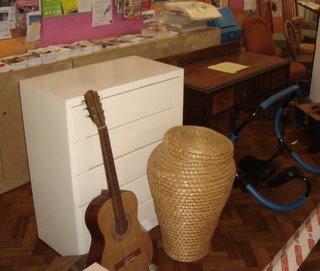Good news from Australia!
Consultants Nolan-ITU have published an update report providing estimates on the use of single-use lightweight plastic carry bags in the period January to June 2005, and compares these figures against the December 2002 baseline.
The report draws the following conclusions:
There is clear evidence from bag import data and Australian bag manufacturers that
there has been a reduction in bag usage in Australia between 2002 and 2004, which has continued into 2005.
It is estimated the reduction in lightweight HDPE bags from 2002 to the end of 2005 will be 27.7% or 1.65 billion bags per year. The reduction in the supermarket sector is estimated to be higher than other retail sectors reflecting a higher level of activity by companies and community organisations in these stores. It is estimated that the 2002-2005 reduction in the supermarket sector is 33% or higher if adjusted for store growth.
The reduction in LDPE shopping bags has been more significant in 2005, with imports dropping an estimated 68.5% from 2002 imports. Industry observations are that the reductions in bag use over the past two years are the result of increased
consumer awareness, better staff training and the more widespread availability and use of heavier duty reusable carry bags.In 2003, the Environment Protection and Heritage Council (EPHC) challenged Australian retailers to establish a National Code of Practice for the Management of Plastic Bags which included a range of targets relating to the reduction and recycling of retail carry bags. These targets included a 25% reduction in the number of HDPE bags issued by end of 2004 against the base of December 2002 and a 50% reduction by the end of 2005.
In response to this challenge, the Australian Retailers' Association (ARA) developed a Code of Practice for the Management of Plastic Bags. This included a commitment to the EPHC targets. The ARA Code focuses on HDPE carry bags. (It was estimated in 2002 that
HDPE bags account for over 85% of total carry bags by number.) The ARA submitted a report to the EPHC on the progress of activity (including progress against the target of 25% bag reduction by the end of 2004).
A further report in early 2005 reported progress to end of 2004. The ARA has submitted a further report to the EPHC on the progress of activity in September 2005. In August 2005 the Department of Environment and Heritage (DEH) engaged Nolan-ITU to undertake a study to report on bag usage over the period January to June 2005. The aim of the study is to identify the level of bag use across all retail sectors and to compare this to data presented in December 2002.
The methodology utilised in the study is therefore focussed primarily on data obtained at a bag manufacturers' and import level. Where possible, supporting data has also been obtained from retailers across many retail sectors.
Copies of the interim report Plastic Retail Carry Bag Use 2002 - 2005 Consumption (0.2 MB)
Download the pdf from the
DEH's websiteInfo provided by
RRF email subscription







